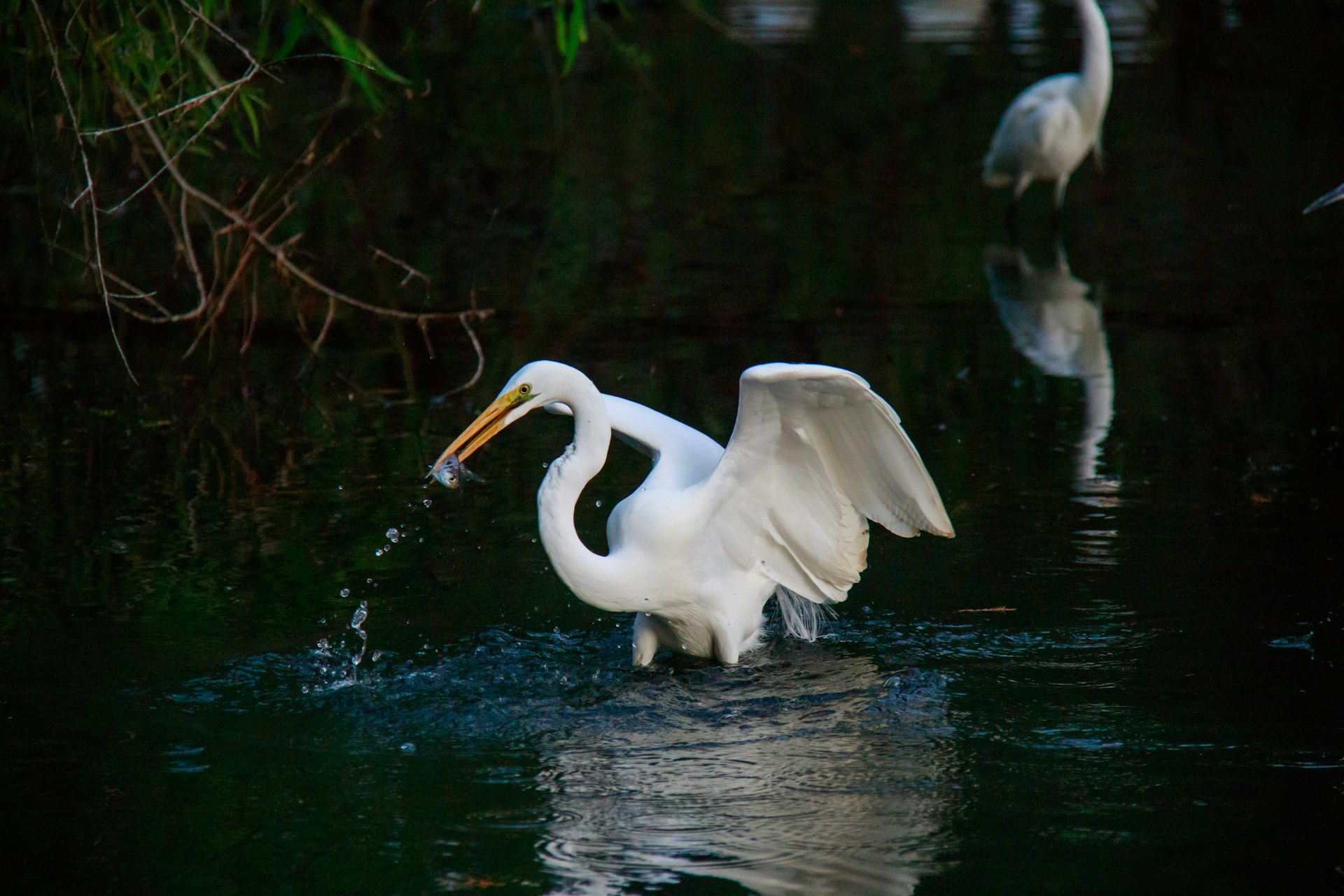
Our planet’s water bodies, especially rivers, are the lifeblood of aquatic ecosystems. They are complex and diverse habitats that support a myriad of species, from tiny plankton to large mammals like whales and dolphins. These freshwater systems are not only ecologically vital but also culturally significant to communities around the globe. Observing these wonders offers invaluable insights into the health of our ecosystems and the biodiversity they harbor. However, this observation must be done with care and consideration to ensure the preservation of these natural treasures for future generations.
Cover photo by May
The Significance of Riverine Ecosystems
Rivers are dynamic and interconnected networks that influence climate, support biodiversity, provide fresh water, and offer numerous benefits to humans. They are critical for maintaining water quality, regulating floods, sustaining fisheries, and offering recreational opportunities. The aquatic ecosystem within a river includes various biotic and abiotic components that interact in a delicate balance. Understanding this balance is essential for the sustainable use of these resources and for the conservation of the species that depend on them.
The Threats to Aquatic Ecosystems
Despite their importance, rivers are under threat from human activities. Pollution, habitat destruction, invasive species, overfishing, and dam construction are just a few of the challenges these ecosystems face. Climate change further exacerbates these threats by altering water flows, increasing temperatures, and introducing new stressors to already vulnerable systems. It is imperative that we approach the observation and study of riverine ecosystems with a sense of responsibility and a commitment to conservation.
Observation as a Tool for Conservation
Observing riverine ecosystems provides critical data on the health and dynamics of these environments. Scientists, researchers, and even citizen scientists can collect valuable information through various methods, such as water sampling, monitoring fish populations, tracking animal migration patterns, and assessing biodiversity. This information is crucial for understanding the impacts of human activities and for developing effective conservation strategies.
Ethical Observation Practices
To ensure that our observations do not harm the ecosystems we are trying to understand and protect, it is essential to adopt ethical practices. This includes minimizing disturbance to wildlife, using non-invasive techniques, and respecting the land and water where these observations take place.
Here are some key considerations for ethical observation:
1. Minimize Disturbance. Any interaction with wildlife should be minimized to avoid stress or altering natural behaviors. This means avoiding direct contact whenever possible and maintaining a safe distance from animals.
2. Use Non-Invasive Techniques. Technologies such as remote sensing, underwater cameras, and drones can provide insights without the need for physical intervention. These tools allow researchers to study and monitor wildlife without the risks of direct contact.
3. Respect Private Property and Indigenous Land. Always obtain necessary permissions before conducting observations on private or indigenous lands. Respect local regulations and cultural significance of these areas.
4. Educate and Involve Local Communities. Engage with local communities to foster stewardship and provide educational opportunities. This can help ensure that conservation efforts are supported by those who live closest to the rivers.
5. Follow Best Practices for Data Collection. Use scientifically validated methods for data collection to ensure the accuracy and reliability of the information gathered. This includes proper training for all observers involved in the study.
6. Report and Share Findings. Share the collected data with relevant authorities, conservation organizations, and the scientific community to aid in the broader understanding of riverine ecosystems.
Technological Advancements in Observation
Advances in technology have revolutionized the way we observe aquatic ecosystems. Satellite imagery, GIS mapping, DNA barcoding, and automated sensor networks can provide vast amounts of data on water quality, land use changes, and biodiversity without the need for physical presence. These tools enable researchers to monitor large areas over time, providing insights into long-term trends and the effects of human activities.
Citizen Science: A Growing Movement
Citizen science has become an invaluable resource in observing riverine ecosystems. By involving volunteers from all walks of life, citizen science initiatives can collect a large amount of data across broad geographic areas. Programs like the Riverwatch initiative in Europe and various fish counting projects around the world showcase how community engagement can contribute to scientific knowledge and conservation efforts.
The Role of Legislation and Policy
Governments play a crucial role in protecting riverine ecosystems through legislation and policy. Laws that regulate water quality, limit pollution, and protect endangered species are essential for the health of these systems. International agreements, such as the Ramsar Convention on Wetlands, provide frameworks for the conservation and sustainable use of these precious resources.
Restoration Efforts and Rehabilitation Projects
Where rivers have been damaged or degraded, restoration efforts and rehabilitation projects are vital for bringing ecosystems back to health. These projects can range from clearing sediment build-up and removing invasive species to constructing fish ladders around dams. Such efforts not only restore ecological balance but also enhance the recreational and aesthetic value of these waterways.
Conservation Success Stories
There are numerous examples where careful observation and ethical intervention have led to successful conservation outcomes. The return of the salmon to the rivers of the Pacific Northwest after dam removal, the recovery of the endangered whooping crane through captive breeding and reintroduction programs, and the revival of the Mississippi River’s health following reduction in nutrient runoff are all testaments to what can be achieved.
Challenges Ahead
Despite these successes, the future of riverine ecosystems faces significant challenges. Climate change is expected to alter precipitation patterns, increase extreme weather events, and introduce new species into these environments. It is crucial that our observation and conservation efforts adapt to these changes and anticipate the needs of these systems well into the future.
Conclusion: A Call to Action
Observing riverine ecosystems with care and consideration is not just an academic pursuit; it is a moral imperative for the preservation of biodiversity and the sustainability of our planet’s freshwater resources. As we continue to learn from these dynamic systems, we must remain committed to ethical practices, innovative technologies, and supportive policies that ensure their health for generations to come. By working together—scientists, policymakers, local communities, and citizens alike—we can safeguard these riverine wonders against the threats they face and celebrate them as the vital, vibrant, and diverse ecosystems they truly are.


